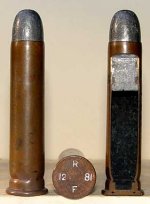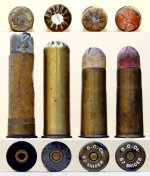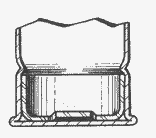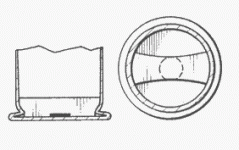kenb
Bronze Member
The casing is 1.75" long, .50" inner diameter. Its a center fire casing but doesn't have a primer. The firing pin that struck the casing was square if thats any help. It was found by Dgaughan on the same property as the King George II Irish half penny that PBK ID'ed, date range 1736 to 1760. Thanks for any input. I cant get a pic up until Monday or Tuesday.
kenb
kenb









